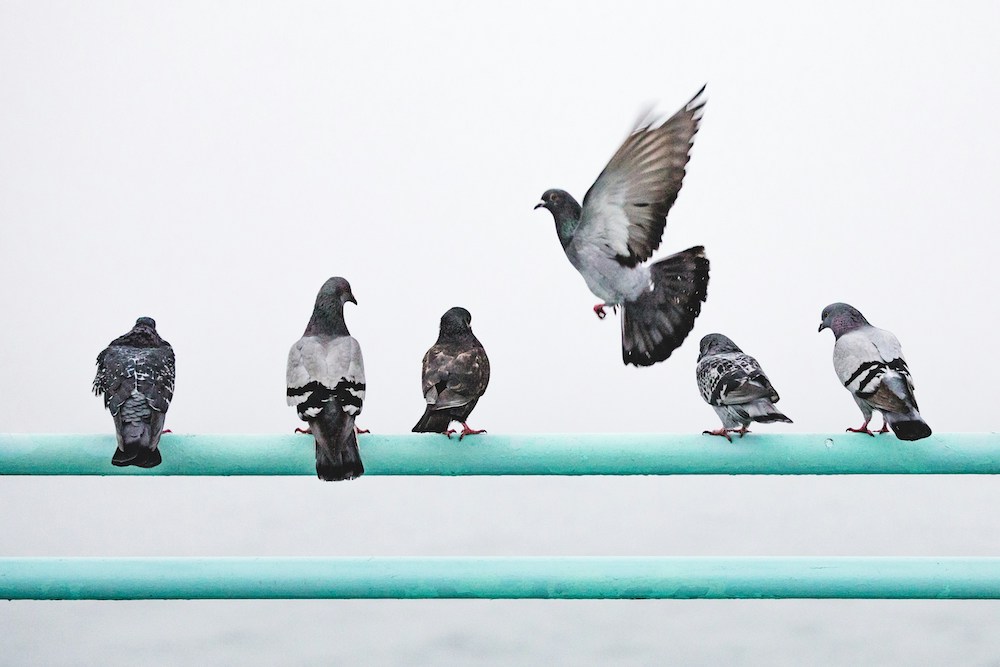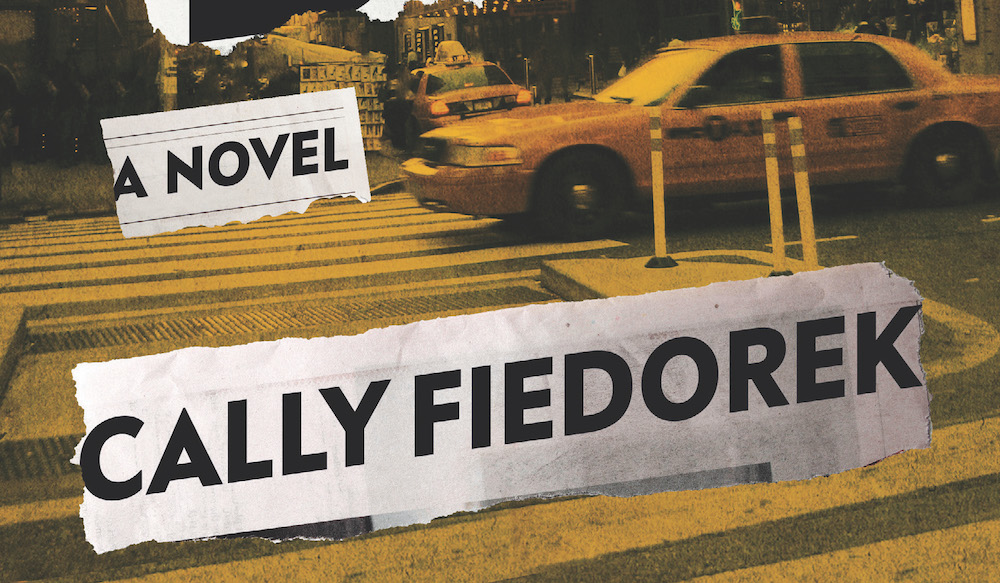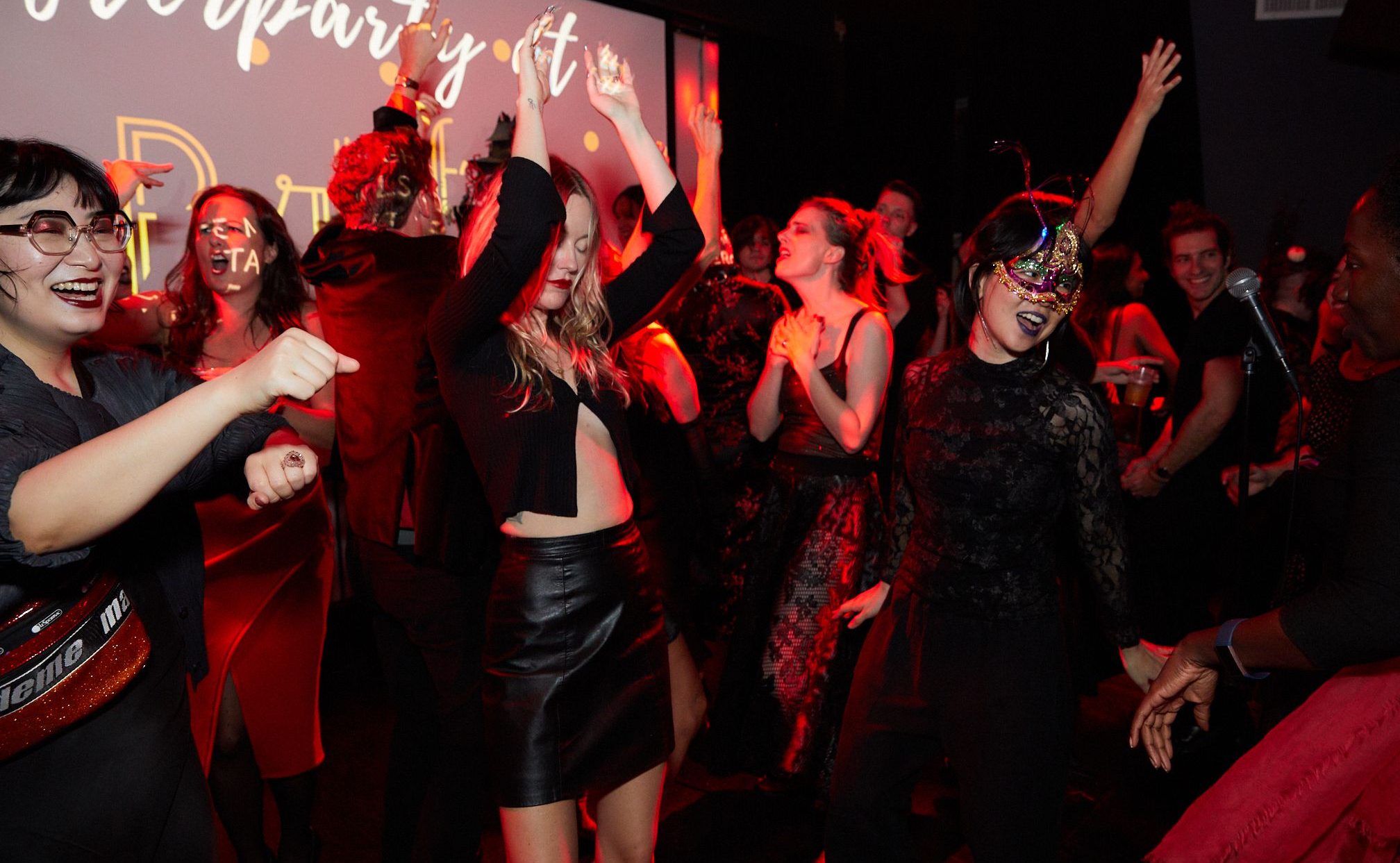Interviews
Finding the Patterns and Fragments in the Life of a Heroin Addict
Katherine Faw’s new novel, ‘Ultraluminous,’ follows a drug-addicted prostitute from the Middle East to New York City

Katherine Faw doesn’t use social media. The only trace of her on the internet is a website, which features photos of hands bearing long nails and a gleaming manicure; a man slumped over on the subway, passed out; the author in cool girl outfits. Even in person, she still seems enigmatic to me, like a character in one of her books — refreshing in a literary landscape of writers constantly tweeting about their family members and pets and exes.

Katherine Faw’s debut, Young God, was published in 2014, a quick kick-in-the-teeth of a book about sex, drugs, and violence. Similar themes crop up in her latest, Ultraluminous. K, the narrator, is a drug-addicted prostitute, back in New York City after years in the Middle East. She has five men in her life — four paying to be there — a sketchy past, and a fixed schedule that seems to both comfort and confine her. The structure is recognizably Fawian in that it’s fragmentary, kinetic. But in this book the language is even more spare, each short chapter a series of mini vignettes that disarm the reader in both their precision and inscrutability. The result is something thrilling and wholly unique, deliciously trashy yet highbrow, cementing her place as one of the most visionary writers around.
I talked to Faw about female insularity and the fragments that make up the patterns of a K’s life.

Juliet Escoria: I know your first book, Young God, took years to write, and was originally twice as long as it was in its finished form. Ultraluminous is told in a similar structure — short fragments that build their way into a larger narrative. Did it start out this way, or was it more like Young God, in that it changed substantially over time?
Katherine Faw: It was only once I found the structure for Young God that I was really able to write it, but Ultraluminous did start out as itself. I knew I wanted to write about almost every day of one year in the life of this woman, to make a book out of repetition and patterns and time. The shape got sharper as I went on, but it was there from the beginning. Strangely, the book still took five years to write.
For the structure of Ultraluminous, I was really influenced by film. I wanted it to be a sequence of brief images that would add on to each other and add up to a whole. And the films mentioned in the book are ones that I watched while I was writing it. They’re all of the slow cinema school — languorous and boring and relentless, with small or big moments of pleasure and sadness and violence.
VIDEO: Katherine Faw Morris talks with Deniro Farrar and Isaac Fitzgerald
JE: The film thing really came across to me. It felt kaleidoscopic, like brightly colored flashing images, very visual. Patterns, for instance, are a big theme in the book — a placeholder for order and predictability for a character who doesn’t have a whole lot of either in her life. And, for K, they seem to also function as a type of superstition. Did that element come before or after your idea of K, the drug addict-prostitute-terrorist character, developed? Do you look for patterns in your own life?
KF: She was an obsessive maker of patterns from the beginning. For her they are a way to order the ultimate condition of the universe, which is chaos. She knows they are arbitrary and yet she compulsively looks for, and therefore finds them, everywhere. She’s also obsessed with cosmology, specifically the way the universe will end, because that is the only thing that will stop chaos, when nothing exists.
She’s a junkie, too, and heroin gives you a unique relationship to time, which is the utmost pattern we humans have come up with. It seems to speed time up because you notice so much less that it’s passing. At the same time, most junkies are ritualized, compulsive people, who carefully organize every day around getting high.
That is the only thing that will stop chaos, when nothing exists.
But all that was there from the first scenes I wrote. Mainly because her psychology and worries and preoccupations are mine or were mine during the time I was writing the book. It’s the only way I know how to make a book, to just sublimate who I am at the time into a piece of art. So I am an obsessive pattern-maker, yes. I do try to keep it in check, though, as it’s only the illusion of control. But I’ve always felt this tension between order and chaos.
JE: K is a prostitute, and there’s a lot of cock sucking and swallowing and fucking in this book. There’s a woman’s sexy body on the cover. This felt both refreshing and confrontational to me, reading it now, in 2017, where I feel like the messiness of sexuality and its inherent power dynamics are being shied away from, an old taboo resurfaced in a new way. Was writing about this subject matter was reactionary? How does it feel to publish such a sexual book into a politically charged climate?
KF: While I was writing, I felt like I was writing a book about a prostitute and what a prostitute does is have sex for money. It was important to me that I describe clearly what goes on between K and her clients. She’s good at her job, too, and she’s expensive. She’s skilled at sex and fantasy.
To me the book is very feminist. I think everything I write is about female ambition. Though I’m so surprised and grateful that this cultural discussion is finally happening, I do worry about the path getting narrow. In America, when it comes to sex, everything can get puritanical fast, and then women always lose. I just hope we can all keep in mind that there are no good girls and no bad girls. There is no right and wrong way to be a woman.
Support Electric Lit: Become a Member!
JE: I love that. I think that’s one of the more refreshing aspects of these conversations about misogyny and rape culture.
K, the narrator of Ultraluminous, grew up in Stuyvesant Town in Manhattan. I lived in New York for a few years, and I feel like I could draw parallels between what Stuy Town is — this kind of insular world — and the character and narrative of your book. Was this something that was done intentionally? What drew you to this neighborhood?
KF: I knew I wanted K to be a native New Yorker but sort of sequestered from the city, too. Stuyvesant Town is on the other side of 14th Street from Alphabet City, and especially when K was growing up, which would have been the ’80s and ’90s, it was its own world. It’s leafy-green with winding paths, and it really feels like a planned community in the D.C. suburbs.
Another reason I chose it is because it’s kind of shorthand for how New York has changed. And New York has changed a lot in the 15 years K has been away. Stuyvesant Town used to be middle-income housing that was rent-stabilized — though only for white people; it was notoriously segregated — but it was sold in a huge real estate deal that went bust during the financial crisis and was then resurrected. The apartments today are market rate, which is astronomical, and now it’s only for rich people.
But when K was growing up it was still a little bit busted, like all of New York used to be. My first friend in New York grew up in Stuy Town, and she would talk about how insular it was. Like kids would only date other kids who lived in Stuy Town, and everybody in all the buildings would go to the same beach on the Jersey shore in the summer. I wanted K as a little girl to feel protected and trapped, and at the same time to know that all she had to do was cross 14th Street to be in the real world.
JE: Yeah, I saw that about the rich people thing when I was Googling… apparently there’s a lottery for “affordable” apartments for “middle class” residents, which they define as $2800 for a one bedroom, and people making $84k and upwards a year. Which seems laughable to me, sitting here, right now, in a three-bedroom house that costs much less than that, in Appalachia, where an income of $84k is considered “rich.”
You grew up in this region, but have lived in NYC for a while now, right? How does having lived in these two wildly different regions inform your writing, and your identity? What’s your relationship to Appalachia now?
KF: I knew from an early age that I would go to New York as soon as I could, and I was lucky enough to be able to do that and to be able to stay here. I’ve lived here almost 17 years. I feel like my true self in New York in a way I never did in North Carolina, and I guess I do think of myself as a New Yorker now.
At the same time, I can be very defensive about Appalachia. I don’t like people who know nothing about it criticizing it. Nobody even pronounces it correctly. People who live in Appalachia say “Appalachia” one way, and then everybody else says it another way, like the people who actually live there must not know how to pronounce it correctly. I have this protective love for Appalachia and the people who live there that will never go away. It’s the place that raised me and I feel like I understand it.
I wanted K to feel that way about New York. After 15 years away, she has come back to a home that has completely changed. And money is what’s changed it. But she still has this protective love for New York and she still understands it, as it is and not as it was. Because everything, everywhere, is always moving forward and it is never going back.
I have this protective love for Appalachia and the people who live there that will never go away.
JE: Do you listen to music when you write? Or rather, if this book had a soundtrack, what would be on it?
KF: I have to write in silence. Music especially, but also people talking, gets in my brain and changes the natural rhythms in an outside way that I don’t like. That said, total silence in New York is impossible. So the music that I did not choose but that I’m sure infiltrated the book anyway is the norteño music my neighbors blast in their backyards from May to October, Friday to Sunday, almost but not quite drowned out by whatever the longest recording on YouTube is of white-noise thunderstorms. That is the sound of this book.
I think K is the same way. I think the music she hears is what’s played in the clubs the men take her to, what comes on the jukebox in the cop bar where she drinks with the ex-Ranger, and whatever floats up through the floorboards or in through her open windows when she’s in her apartment alone.
JE: One time you interviewed me for the (sadly) now-defunct Adult Magazine, which you ended by saying: “I now have a great desire to make this an Into the Gloss interview.” Which made me really happy because I love talking about beauty products. So I’d like to end this interview the same way. What are some great beauty products?
KF: This makes me so happy, too. Thank you. How about my favorite red lipsticks? The best orange-red ever, which looks particularly good if you have yellow vampire skin like me, is Lana by NARS. For a true red, with more blue in it, I really like Sephora’s Always Red. It’s a liquid lipstick but it doesn’t make your lips look like the desert and it’s very Hollywood. My favorite pinky-red, which I wear almost every day, is Dragon Girl by NARS. It goes with everything — both snakeskin and leopard-print, my usual attire — and it’s a lip pencil so overdrawing your lips is easy. Bonus: the greatest pink of all time is Schiap, also by NARS. It manages to be both neon and classy. This interview has not been sponsored by NARS.








